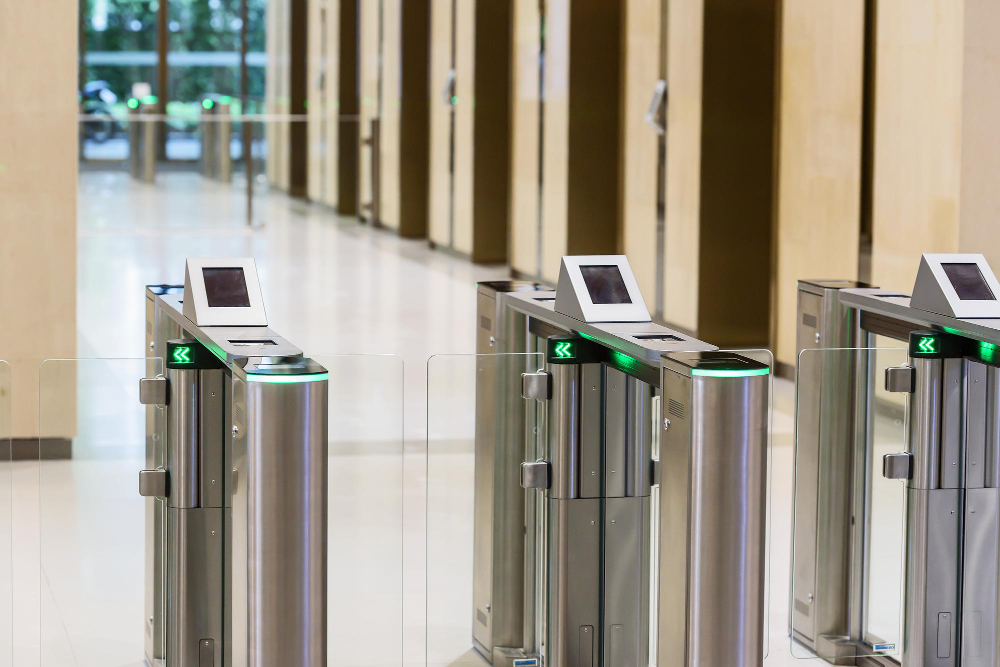While organizations diligently protect their digital assets, physical security is sometimes neglected. However, both aspects are susceptible to security risks, including tailgating. This type of attack occurs when hackers or malicious actors gain access to restricted areas by following authorized employees.
Ahead, we’ll learn about tailgating, how it works, who’s at risk, its effects, and how to prevent it from happening. Let’s find out!
What is a Tailgating Attack?

To put it simply, a tailgating attack is a physical attack in which a malicious actor tries to enter restricted premises or areas by following an authorized individual.
A common scenario involves a malicious actor sneakily entering a place by discreetly following an employee as they enter. Similarly, these actors can also exploit an employee’s device to tailgate into a network using their credentials to access private data or even spread malware.
How Does Tailgating Work?

Tailgating occurs when an unauthorized person discreetly follows an authorized person to get access to a secure area, differing from piggybacking, where the intruder openly follows the authorized person.
Some of the most common tailgating scenarios include:
- An intruder slips into an office building by walking closely behind an employee with a valid access card and enters the building before the door closes.
- A hacker steals an employee’s laptop and then uses their login information to access confidential files.
- A thief disguises as a delivery person or service provider requesting access to enter an area.
Who’s at Risk of Tailgating Attacks?

Large organizations are the most common targets for this attack. They typically have many employees, entrance points, subcontractors, and deliveries in and out every day. Organizations whose employees are not well-trained in physical and cybersecurity attacks are also at risk.
What are the Effects of Tailgating?

Tailgating attack brings detrimental effects to organizations. Once the attackers enter your private area and take advantage of your data, these can happen:
- They can hack the organization’s network
- They will gain access to private organization data
- They are able to install surveillance cameras to monitor the organizations’ activities
How Technology Helps Prevent Tailgating Attacks

With recent advanced technology, it’s not impossible to prevent this attack from occurring in your organization by implementing efforts like video surveillance, video identification, and access control.
Video Surveillance
Video surveillance serves as a deterrent to unauthorized individuals and provides security teams with the ability to monitor and identify potential intruders. The presence of cameras can discourage potential tailgaters and offer crucial evidence in case of a security breach.
Additionally, modern smart security cameras equipped with AI algorithms can analyze video activity in real time, enhancing the ability to stop this attack from succeeding.
Identification
Employee or guest identification, such as badges, IDs, biometric systems, smart cards, PIN codes, proximity cards, and RFID cards, can be employed to ensure that the person entering an area is authorized. They won’t be allowed to enter when they cannot present valid identification.
Access Control
As mentioned above, valid identification can help prevent unauthorized individuals from entering a building. Access can also be controlled with turnstiles, where a valid identification should be presented to open the gate and only allow one person to enter at once. This is especially suitable for busy organizations where people go in and out frequently.
Frequently Asked Questions
What are common tailgating methods?
Common methods include following someone closely into a secured area without proper authorization or using stolen credentials to access a restricted network.
How does tailgating differ from pretexting?
Tailgating involves an unauthorized person closely following an authorized individual to gain access, while pretexting creates fictitious scenarios to steal personal information by impersonating a trusted, familiar entity.
What is the purpose of tailgating?
The main purpose of this attack is to steal private data and use it for harmful purposes.
Conclusion
Tailgating, a security attack, must be prevented at all costs to avoid further harm. Preventive measures include controlling access, requiring valid identification, installing surveillance cameras, and maintaining vigilance at all times.
If you want to enhance your company’s security and prevent tailgating, contact Fluxgate now!
